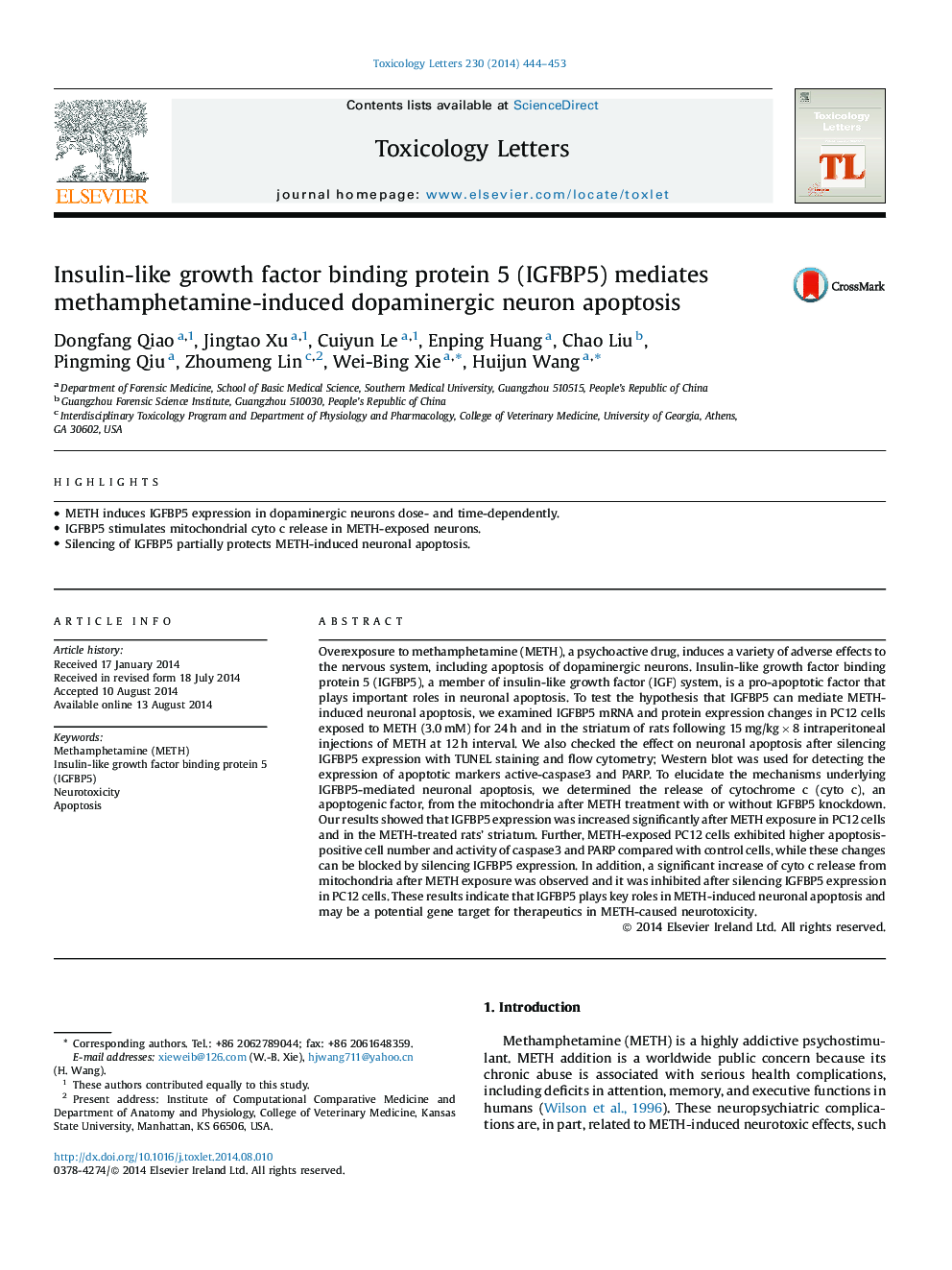| Article ID | Journal | Published Year | Pages | File Type |
|---|---|---|---|---|
| 5859938 | Toxicology Letters | 2014 | 10 Pages |
Abstract
Overexposure to methamphetamine (METH), a psychoactive drug, induces a variety of adverse effects to the nervous system, including apoptosis of dopaminergic neurons. Insulin-like growth factor binding protein 5 (IGFBP5), a member of insulin-like growth factor (IGF) system, is a pro-apoptotic factor that plays important roles in neuronal apoptosis. To test the hypothesis that IGFBP5 can mediate METH-induced neuronal apoptosis, we examined IGFBP5 mRNA and protein expression changes in PC12 cells exposed to METH (3.0 mM) for 24 h and in the striatum of rats following 15 mg/kg Ã 8 intraperitoneal injections of METH at 12 h interval. We also checked the effect on neuronal apoptosis after silencing IGFBP5 expression with TUNEL staining and flow cytometry; Western blot was used for detecting the expression of apoptotic markers active-caspase3 and PARP. To elucidate the mechanisms underlying IGFBP5-mediated neuronal apoptosis, we determined the release of cytochrome c (cyto c), an apoptogenic factor, from the mitochondria after METH treatment with or without IGFBP5 knockdown. Our results showed that IGFBP5 expression was increased significantly after METH exposure in PC12 cells and in the METH-treated rats' striatum. Further, METH-exposed PC12 cells exhibited higher apoptosis-positive cell number and activity of caspase3 and PARP compared with control cells, while these changes can be blocked by silencing IGFBP5 expression. In addition, a significant increase of cyto c release from mitochondria after METH exposure was observed and it was inhibited after silencing IGFBP5 expression in PC12 cells. These results indicate that IGFBP5 plays key roles in METH-induced neuronal apoptosis and may be a potential gene target for therapeutics in METH-caused neurotoxicity.
Related Topics
Life Sciences
Environmental Science
Health, Toxicology and Mutagenesis
Authors
Dongfang Qiao, Jingtao Xu, Cuiyun Le, Enping Huang, Chao Liu, Pingming Qiu, Zhoumeng Lin, Wei-Bing Xie, Huijun Wang,
